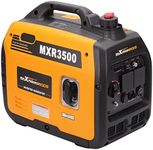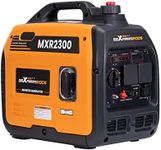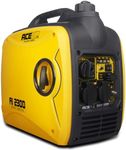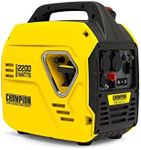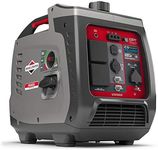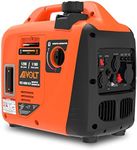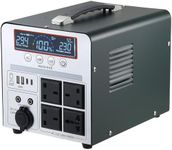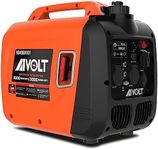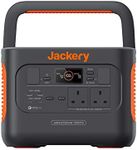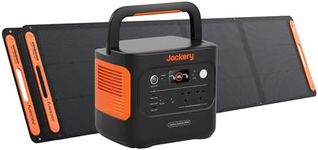Buying Guide for the Best Generator Inverters
Choosing the right generator inverter can be a crucial decision, especially if you need reliable power for your home, RV, or outdoor activities. Generator inverters are known for their ability to provide clean and stable power, making them ideal for sensitive electronics. To make an informed decision, you need to understand the key specifications and how they align with your needs.Power OutputPower output, measured in watts, indicates how much electricity the generator inverter can produce. This is important because it determines what devices and appliances you can run simultaneously. Power output can be divided into segments: low (up to 2000 watts), medium (2000-4000 watts), and high (above 4000 watts). If you need to power small devices like phones and laptops, a low power output may suffice. For larger appliances like refrigerators or air conditioners, you will need a medium to high power output.
Fuel TypeGenerator inverters can run on different types of fuel, such as gasoline, propane, or diesel. The fuel type affects the convenience, cost, and availability of running the generator. Gasoline is widely available and easy to use, but it can be more expensive and less efficient. Propane is cleaner and often cheaper, but requires a separate tank. Diesel is efficient and long-lasting, but can be harder to find and more expensive. Choose a fuel type based on your access to fuel and how often you plan to use the generator.
RuntimeRuntime refers to how long the generator inverter can operate on a full tank of fuel. This is crucial for planning how long you can rely on the generator without needing to refuel. Runtime can vary significantly, with some models offering a few hours and others providing up to 12 hours or more. If you need continuous power for extended periods, look for a generator with a longer runtime. For occasional use, a shorter runtime may be sufficient.
Noise LevelNoise level, measured in decibels (dB), indicates how loud the generator inverter will be during operation. This is important for comfort and compliance with noise regulations, especially in residential areas or campsites. Noise levels can range from very quiet (below 60 dB) to quite loud (above 75 dB). If you need a generator for camping or home use, a quieter model is preferable. For construction sites or areas where noise is less of a concern, a louder model may be acceptable.
PortabilityPortability refers to how easy it is to move the generator inverter around. This is determined by the weight and design of the unit. Portable models are typically lighter and may have handles or wheels for easy transport. If you need a generator for outdoor activities or to move between locations, a portable model is essential. For stationary use, portability may be less important.
Start TypeStart type refers to how the generator inverter is turned on. Common options include manual recoil start, electric start, and remote start. Manual recoil start requires pulling a cord, which can be physically demanding. Electric start uses a button or key, making it easier to operate. Remote start allows you to start the generator from a distance, adding convenience. Choose a start type based on your preference for ease of use and physical capability.
Inverter TechnologyInverter technology ensures that the power produced is clean and stable, which is crucial for sensitive electronics like computers and smartphones. This technology converts DC power to AC power and adjusts the engine speed to match the load, improving efficiency and reducing noise. If you plan to power sensitive devices, ensure the generator has advanced inverter technology. For basic power needs, standard inverter technology may be sufficient.
